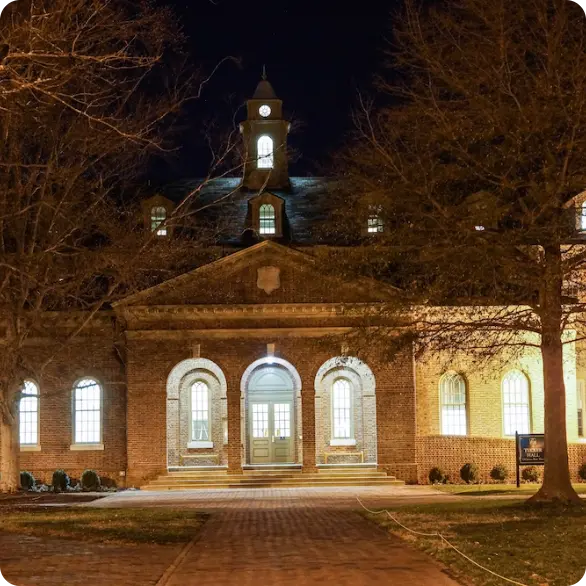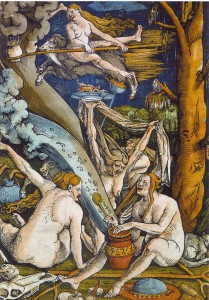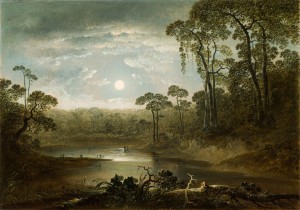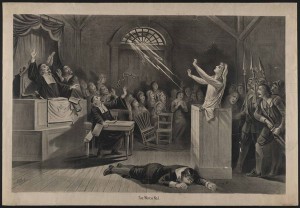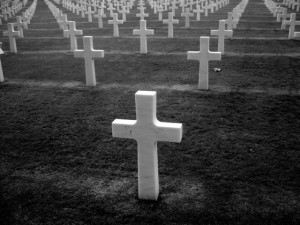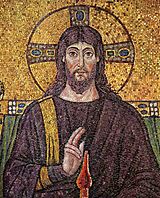Witches in Virginia & The Virginia Witch Hunts
The most famous witch trials occurred in Salem, Massachusetts in 1692 when a group of young girls claimed to be possessed by the devil. These young girls started to have violent fits; they would scream and have uncontrollable outbursts. People didn’t know what to think until the girls accused several local women of witchcraft.
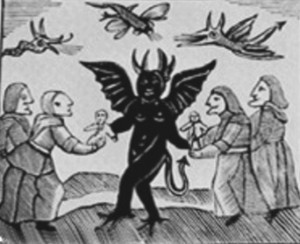
Back then, science wasn’t as advanced as it is today. People didn’t have, what would be considered by today’s standards, a logical explanation for what was going on. Therefore, after examining the girls, William Griggs (a local doctor), diagnosed them with bewitchment. Tituba (a slave), Sarah Good (a homeless beggar), and Sarah Osborn (a poor woman) were blamed for the crime. What didn’t help was Tituba pleaded guilty, which resulted in more hysteria. When many other young girls started to exhibit the same symptoms, the town panicked.
What came of these accusations was the criminal prosecution, and even death, of many people (mostly women) in the coming years.
Witch trials didn’t just occur in Massachusetts. Other states accused women, and some men, of witchcraft. One of these states was Virginia. There were more than thirty-three witch trials in Virginia from the 1600’s until the final trial took place in 1733.
Witches in Virginia – Most Famous Witch Trial: Grace Sherwood
Virginia didn’t experience the hysteria that Massachusetts did. There was extreme hesitation in the courts to accuse someone of witchcraft because of the severity of the crime. According to historical reports, no women in Virginia died as a result of these trials and only one woman was found guilty. Known as the witch of Pungo, Grace Sherwood of Princess Anne County, was the only person found guilty of witchcraft; because of this, her story is the most famous in Virginia.
Historical records show that Sherwood was born in Pungo, Virginia (located in the Southern part of Virginia, Beach) in 1660 to carpenter John White and his wife, Susan White. Grace only married once to a man named James Sherwood who died in 1701. She had three children with him.
The first time Sherwood was accused of witchcraft was in 1698. Her neighbors claimed that she had bewitched their pigs and cotton. Grace and her husband fought the case against her and lost. Sherwood wasn’t arrested, but rumors and accusations started to spread.
After her husband’s death, Grace had to care for the farm and her three children all by herself. Also, because she never remarried, she was often criticized, ridiculed, and treated with hostility. She would often wear men’s clothes when working and it was known that she was a herbalist. Her lifestyle opened her up to suspicion. She would often be accused of destroying gardens, causing livestock to die, and influencing the weather. It didn’t help that she had previously been accused of witchcraft.
In 1705, she sued her neighbors, Luke and Elizabeth Hill, for assault and battery. She won and received twenty pounds sterling in damages. However, Luke and Elizabeth fought back.
Early the next year, the two claimed that Sherwood had bewitched Elizabeth, accusing Sherwood of witchcraft for a second time. Time and again, the court delayed Sherwood’s trial. Eventually, a jury of women were assigned the task of searching Sherwood for incriminating marks (spots where a witch might feed an animal-like demon given to her by the devil). The women claimed to have found two marks. The case ended up going back and forth between Williamsburg and Princess Anne County for five months. In the end, Sherwood wasn’t convicted.
Sherwood, however, was still patronized. The county administered an investigation of her home which resulted in a trial by water.
The test was administered on July 10, 1706, in Lynnhaven River. When they dropped Sherwood in the water, she floated. Her body was then examined a second time by a group of women who found two marks on her body. She was convicted and sent to jail.
There is no record of Sherwood’s release from prison. However, in 1714, she appeared before the secretary of the colony to have her land reinstated to her. Therefore, it’s safe to assume that at this point, she was released from prison.
Sherwood lived out her days on her farm, until she died in 1740.
Life After Death
Grace Sherwood’s story is known and celebrated throughout Virginia annually. InPungo, Sherwood is an honorary official of the town’s annual strawberry festival. Also, in Williamsburg, there is a yearly reenactment of her trial. She is known throughout Virginia Beach, which also holds a yearly reenactment, held at the Ferry Plantation House. In 2006, during this reenactment, Mayor Meyera E. Oberndorf read the pardon for Grace Sherwood aloud. He also declared that July 10th (300 years after her trial to the day), be known as Grace Sherwood Day.
That same day, the governor of Virginia (Timothy Kane) also pardoned Sherwood. The following year, a statue of Sherwood was unveiled in Virginia Beach.
Other Accusations of Witchcraft in Virginia
While Grace Sherwood was the only woman convicted of witchcraft in Virginia, she wasn’t the only accused person. Court records were destroyed during the Civil War, so it’s impossible to know exactly how many cases there were. There are, however, at least a dozen cases in colonial Virginia. Some of the accused people include Joan Wright, Katherine Grady, William Harding, and a woman named Mary (no last name), among others.
The earliest known case occurred in September 1626 when Joan Wright’s neighbors accused her of causing the death of a newborn through witchcraft. Wright was a married midwife from Surry County. She was also accused of killing crops and livestock, and accurately predicting the deaths of other colonists. In the end, however, Joan wasn’t convicted.
Another woman accused of witchcraft was Katherine Grady. Although she wasn’t technically in Virginia when convicted, she was heading there from England. En route, a violent storm hit. As an explanation for the unfortunate event, the crew accused Katherine Grady of causing it through witchcraft. Detailed records of the trial are lost, but it is known that Grady was hung before reaching the Virginian shores.
In Virginia, two men were suspected of practicing witchcraft. One of two was a man named William Harding. In 1656, Reverend David Lindsey, an expert on witchcraft from Scotland, accused William of practicing witchcraft. He was sentenced to thirteen lashes. No records indicate why they accused him of the crime.
In other known cases, people suspected women of bewitching horses, cows, and chickens, and sometimes would inspect them for marks.
The last known case of witchcraft in Virginia occurred in 1730. Accusations began when people suspected a woman named Mary of using witchcraft to find lost items and treasure. As a punishment for the accusation, she was reportedly whipped thirty-nine times.
Witch Trials and the Reasons for Them
So why did all of this happen? What caused people to become so paranoid that they started to believe devil-worshiping witches surrounded them?
Back then people strongly believed in heaven and God. They also believed in hell, the devil, and those who served him. Because of this, people strongly believed in witchcraft. Witch trials were even common in England, in addition to America. What further enforced suspicion were the Native Americans and their beliefs and practices. When encountering this strange new culture settlers didn’t know what to think. Logically, they started to believe that the Native Americans were devil worshipers.
In addition to the surrounding area and its inhabitants, this belief was further instilled by the horrible conditions the settlers lived in. There was plenty of crop failure, illness, or death that had no clear cause. So, logically, settlers turned to witchcraft as an explanation.
Individuals who were found guilty of witchcraft were often slaves (Ex: Tituba) or peculiar and unpopular members of the community (Ex: Sarah Good, Sarah Osborn, Grace Sherwood, Joan Wright, etc.,).
There were a number of methods for testing the suspected. The most common test was a trial by water. This involved binding the hands and feet together and throwing the person into the water. If the accused sank, they were innocent, and if they floated, they were found guilty of the charge.
Other tests consisted of brutal torture. One method was known as pressing. This consisted of the suspected person being placed between two stones that would crush them until they confessed. A third method also involved water and was known as dunking. This consisted of the accused being held under water for a time and occasionally being brought back up. This would continue until they confessed.
The tests used less often included the touch test (if the victim stopped having a fit after the accused touched them, the accused was guilty), having the accused recite a prayer, and the finding of any artifacts linked to witchcraft (poppets, books of palmistry, and horoscopes, etc.,).
Another test was known as the cake test. This involved mixing the victim’s urine with rye meal and having a dog eat it. If the accused screamed in pain when the dog was eating it, (because particles of herself would be in the urine) then she was a witch.
Conclusion
Witch trials were common in the colonial era. Many women and some men were found guilty of witchcraft. However, not all the trials occurred in Massachusetts. Among other states, Virginia had its fair share. It is true that people fear what they don’t understand, and times were hard when the trials began. People wanted an explanation for the hardships so they turned to witchcraft. As a result, people like Grace Sherwood, Joan Wright, Katherine Grady, William Harding, and Mary suffered.
Witch trials ceased to continue after they were found unlawful by the government and one of the darkest times in America’s history came to a close.
Book a Williamsburg Tour and see for yourself
Our tour will take you on a leisurely stroll along the tree-lined cobbled streets of this beautiful and historic city. In around three-quarters of a mile on our standard tour, our entertaining and knowledgeable guide will regale you with stories of characterful spots in the Historic District of Williamsburg.
For those with an appetite for the terrifying, our extended tour will take in an additional haunted locations.
Get more information and reserve a tour today!
